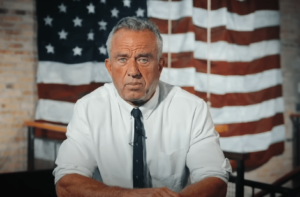
The highly anticipated criminal trial for Sam Bankman-Fried, former CEO of bankrupt crypto exchange FTX, started Tuesday to determine whether he’s guilty of seven counts of fraud and conspiracy. And as one former federal prosecutor put it: “The odds seem to be stacked against him at this point.”
The 31-year-old co-founded FTX in 2019; within a few years the once third-largest crypto exchange’s valuation hit $32 billion at its peak. It’s now trying to claw back any funds to distribute to creditors.
But how did the once third-largest crypto exchange get here?
Before FTX, Bankman-Fried co-founded crypto-trading firm Alameda Research in 2017. He co-founded FTX in 2019 as a complement to Alameda, to help bring in revenue and liquidity for the trading arm.
Within two years, more than 80 investors provided about $2 billion in capital to FTX, helping Bankman-Fried propel his vision into a reality. In January 2022, the company raised $400 million in a Series C round, boosting its valuation to $32 billion. That was its last round of public funding.
The company gained somewhat mainstream recognition with branding deals and partnerships. For example, in 2021 it bought the naming rights for the Miami Heat’s home arena. FTX also got its name branded on Major League Baseball umpires’ polos, and it partnered with celebrities like Tom Brady and his ex-wife, Gisele Bündchen, as well as Steph Curry, Shaquille O’Neal and Naomi Osaka, among others. He also had close ties to U.S. regulators and government officials, many of whom he donated to.
Bankman-Fried was even compared to Warren Buffet and many called him the white horse of crypto (TechCrunch never did, for what it’s worth).
But in early November 2022, that all changed.
FTX’s collapse
Concerns surrounding FTX’s liquidity grew after CoinDesk published a copy of Alameda’s balance sheet, showing the firm held $14.6 billion in assets and $8 billion in liabilities as of June 30, 2022.
But there was a problem: The report showed Alameda’s largest asset was $3.66 billion of “unlocked FTT” and $2.16 billion of “FTT collateral.” FTT was the token behind FTX.
The balance sheet showed that the $5.82 billion in FTT tokens that Alameda owned was 193% higher than the total FTT market cap, which was about $3 billion at the time. That means it purported to have more FTT tokens on its balance sheet than what existed in the world.
Around the same time it was exposed, the world’s largest crypto exchange, Binance, started pulling out its remaining $2.1 billion equivalent of cash in BUSD and FTT. (It had an equity position in FTX from 2019 to 2021.) This essentially triggered a bank run on FTX.
FTX and Alameda filed for Chapter 11 bankruptcy in the U.S. mid-November 2022. Bankman-Fried resigned, and John J. Ray III, the Enron turnaround veteran, was appointed its new CEO.
Bankman-Fried, however, maintained his innocence. At The New York Times’ DealBook Summit, he appeared virtually from the Bahamas, saying “I didn’t ever try to commit fraud on anyone; I was shocked by what happened this month.” In a published DM exchange with a Vox reporter, he said he regretted filing for bankruptcy and thought that “regulators make everything worse.”
SBF arrested
Bankman-Fried was arrested in December 2022 in the Bahamas, where FTX was based. He was then extradited to the U.S. to face a number of criminal charges. He was released on a $250 million bail bond, and he remained under house arrest at his parents’ home in Palo Alto. This was revoked in August after he was accused of intimidating Alameda’s former CEO, Caroline Ellison, by leaking her private diary.
Ray represented the company during a House Financial Services Committee hearing regarding FTX. When asked whether the firm had significant risk management systems, Ray said at the time that “there were virtually no internal controls and no separateness whatsoever” and added that he did not “trust a single piece of paper” in the exchange’s organization. U.S. Attorney Damian Williams called Bankman-Fried’s alleged crimes “one of the biggest financial frauds in American history,” in a press conference.
The aftermath
FTX co-founder and former CTO Gary Wang, and Alameda Research’s former CEO, Caroline Ellison, both pleaded guilty in December 2022 to federal criminal charges in relation to the FTX collapse. They’re also facing civil penalties from the U.S. Securities and Exchange Commission (SEC) and Commodity Futures Trading Commission (CFTC) alongside the criminal charges. Wang and Ellison plan to cooperate with prosecutors and will be major witnesses in the trial, given their close ties to Bankman-Fried, FTX and Alameda.
In January, Bankman-Fried pleaded not guilty to all counts, which include wire fraud, conspiracy to commit money laundering and conspiracy to misuse customer funds. He could face up to 115 years in jail if convicted on all charges.
The crypto industry as a whole suffered from FTX’s collapse, which was the first of many. BlockFi filed for Chapter 11 in November 2022, as did Genesis Global Trading in January.
Where we are today
Bankman-Fried will be represented by Cohen & Gresser, and Mark Cohen, a high-profile defense attorney and former federal prosecutor, will be the lead attorney. If that name sounds familiar, it might be because he also represented Ghislaine Maxwell in her sex trafficking trial related to Jeffrey Epstein. He requested an early release for Bankman-Fried but was denied.
With the trial beginning, we’re witnessing how FTX’s story ends. But what’s on our mind is what happens to the investors and creditors affected by the collapse? And what happens to the billions in crypto assets tied up in legal proceedings?






